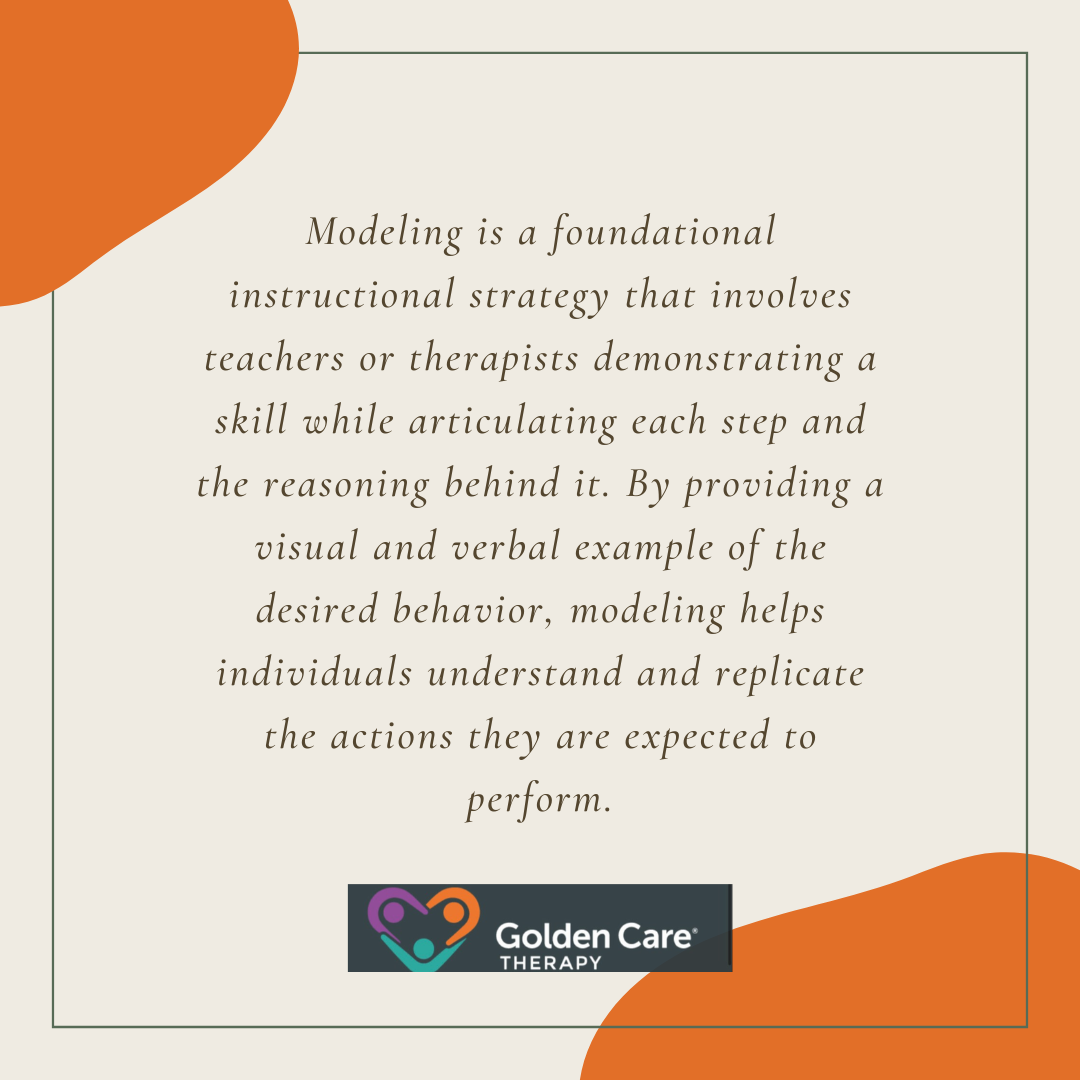
Table of Contents
Modeling ABA, or Applied Behavior Analysis, offers valuable insights and techniques for helping individuals with autism thrive. This approach focuses on teaching new skills and improving behaviors by using structured and consistent methods.
It involves setting clear goals, providing positive reinforcement, and using real-life scenarios to practice new skills. By observing and mimicking behaviors, modeling ABA helps individuals learn and apply these skills in everyday situations.
This method not only supports learning but also encourages independence and self-confidence. Understanding how modeling works can open up new opportunities for growth and development.
What is ABA?
ABA therapy is a scientifically validated approach that focuses on understanding and improving behaviors to enhance learning and adaptive skills. It is a systematic, data-driven methodology used to address various behavioral challenges, including those exhibited by individuals on the autism spectrum.
Within the landscape of autism intervention strategies, ABA therapy holds an important position. It is renowned for its effectiveness in helping individuals with autism spectrum disorder develop essential skills and reduce problematic behaviors.
ABA therapy emphasizes personalized interventions tailored to the unique needs of each individual, making it a versatile and impactful approach to addressing the core symptoms of autism.
One of the key techniques utilized within ABA therapy is modeling, a strategy that plays a pivotal role in teaching new behaviors and skills to individuals with autism.
Modeling provides concrete examples for individuals to observe and imitate, facilitating enhanced learning and skill acquisition in a structured and supportive environment.
Techniques in ABA Therapy
Various techniques are employed in ABA to facilitate learning and behavior modification. Among these techniques are modeling, visual modeling, and the script fading approach, each playing a significant role in promoting skill acquisition and behavior improvement in individuals, especially those with autism.

This technique is particularly valuable in teaching new skills to individuals with autism, as it offers a clear and structured demonstration of positive behaviors for them to emulate.
Meanwhile, visual modeling is a technique that’s especially beneficial for individuals on the autism spectrum who may struggle with verbal instructions.
This approach incorporates visual aids such as charts, pictures, or video demonstrations to present information in a clear and accessible manner. By leveraging visual cues, visual modeling simplifies complex concepts and behaviors, making them easier for individuals to comprehend and apply in their daily lives.
This method enhances learning outcomes by providing a visual reference that reinforces understanding and retention of the targeted skills.
On the other hand, script fading is a technique within ABA therapy aimed at developing social skills and fostering confidence in individuals, including those with autism.
This approach involves gradually reducing or fading the use of scripted prompts during social interactions or tasks to encourage independent and spontaneous communication. By initially providing individuals with scripted responses or phrases and gradually fading them out, individuals learn to navigate social situations with increasing autonomy and adaptability.
The script fading approach is effective in helping individuals acquire and generalize social skills, thereby enhancing their social interactions and relationships.
Application of Modeling in ABA
Modeling is a pivotal teaching technique within Applied Behavior Analysis (ABA) therapy, especially beneficial for individuals, predominantly autistic children, to acquire new skills effectively through observation and imitation.
In ABA therapy, modeling serves as a fundamental tool for showcasing desired behaviors to individuals, offering a clear example for them to replicate. Through visual demonstrations by behavior technicians or therapists, individuals, especially those with autism, can observe and imitate these behaviors effectively.
This method proves particularly valuable for individuals who may struggle with traditional verbal instructions.
In terms of teaching complex skills, modeling plays a crucial role in breaking down tasks into manageable steps. The “modeling” instructional strategy involves educators demonstrating skills while articulating each step along with the rationale behind it.
This dual approach provides a comprehensive visual and verbal example for individuals to understand and emulate the desired behavior effectively.
Implementing Modeling
Implementing modeling is crucial in creating effective behavior plans tailored to the needs of individuals with autism. By incorporating these strategies, behavior technicians and therapists can support individuals in acquiring new skills and managing challenging behaviors in both individual and group settings.
When developing behavior plans that involve modeling, it’s essential to begin by conducting a thorough assessment of the individual’s strengths, challenges, and goals. Behavior technicians utilize modeling as a teaching technique by demonstrating the desired behaviors for the individual to observe and imitate.
This method provides a tangible example that can help individuals grasp and replicate the targeted behaviors effectively.

Individual vs. Group Settings
Also, the application of modeling can vary based on whether the therapy session is conducted in an individual or group setting. In individual settings, behavior technicians can provide personalized attention and tailor modeling strategies to address the specific needs of the individual.
This one-on-one approach allows for focused instruction and immediate feedback, enhancing the individual’s learning experience.
On the other hand, in group settings, modeling techniques can be utilized to facilitate social interactions and collaboration among individuals with autism. Group sessions offer opportunities for individuals to observe and learn from their peers through modeling behaviors in a social context.
This setting encourages social engagement, communication, and the practice of adaptive behaviors within a supportive group environment.
Modeling ABA for autism opens up a world of possibilities for helping individuals learn, grow, and thrive. By using clear, structured teaching methods, ABA creates a supportive environment where progress becomes achievable.
Whether it’s improving communication, behavior, or social skills, modeling ABA can make a lasting, positive impact on the lives of those with autism, giving them the tools they need for a brighter future. If you’re looking for services at ABA centers in Georgia, New Jersey, New York, and Indiana, reach out to Golden Care Therapy today. Contact us to learn how we can support your child’s development.
Sources:
- Video Modeling and Its Impact on ABA Learning - September 27, 2024
- Strategies for Teaching Turn-Taking in Autism - September 27, 2024
- Understanding Social Boundaries in Autism - September 27, 2024
